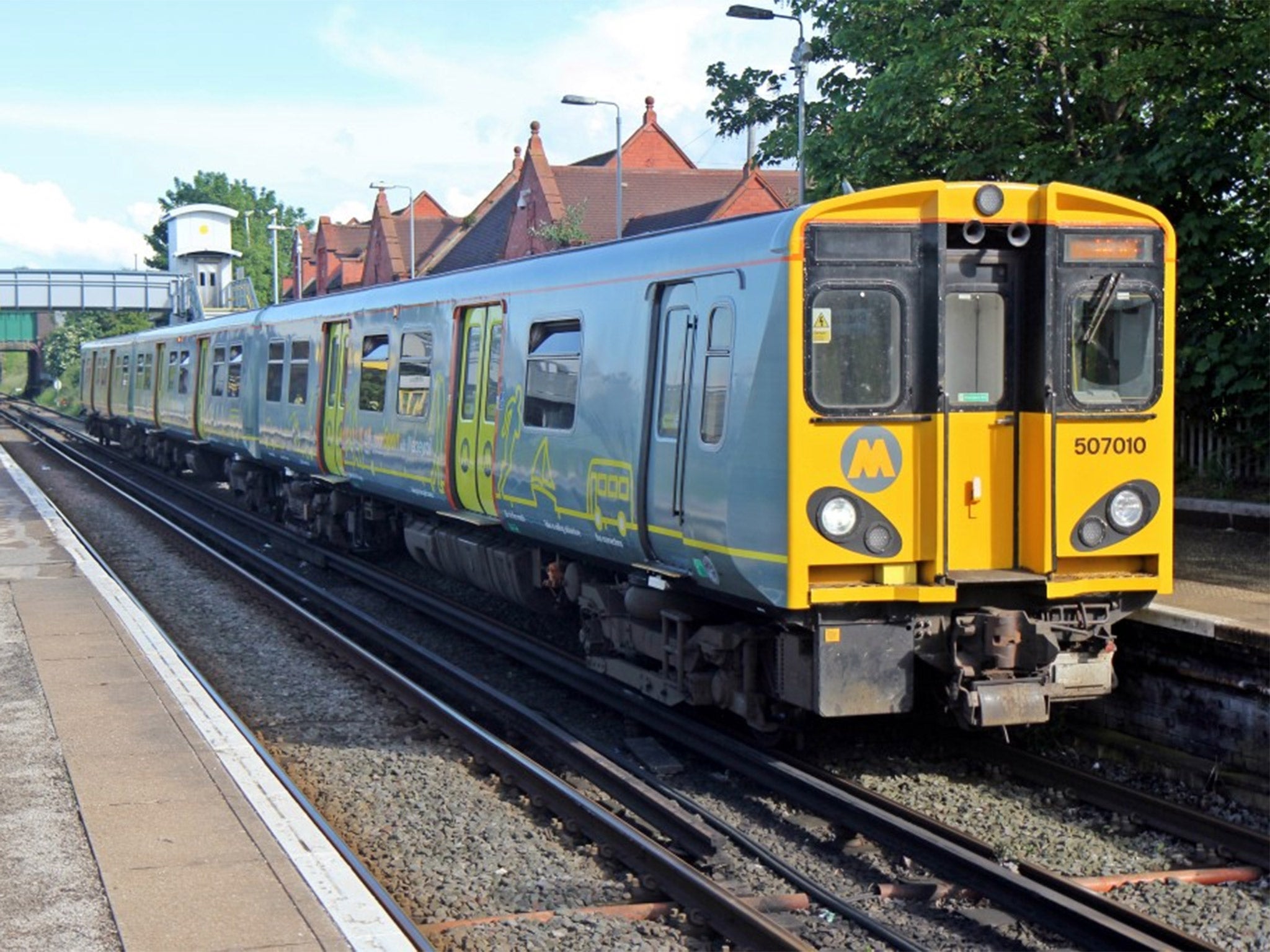Anger over 'Northern Powerhouse' commuters having to use 40-year-old 'boneshaker' trains
In London, the average age of rolling stock is 18.1 years – the average for Merseyrail trains is 36

Your support helps us to tell the story
From reproductive rights to climate change to Big Tech, The Independent is on the ground when the story is developing. Whether it's investigating the financials of Elon Musk's pro-Trump PAC or producing our latest documentary, 'The A Word', which shines a light on the American women fighting for reproductive rights, we know how important it is to parse out the facts from the messaging.
At such a critical moment in US history, we need reporters on the ground. Your donation allows us to keep sending journalists to speak to both sides of the story.
The Independent is trusted by Americans across the entire political spectrum. And unlike many other quality news outlets, we choose not to lock Americans out of our reporting and analysis with paywalls. We believe quality journalism should be available to everyone, paid for by those who can afford it.
Your support makes all the difference.In the heady 1980s, when cinemagoers in the North of England flocked to watch the Back to the Future films, they perhaps imagined that in 2015 they would all be commuting to work on hoverboards.
The reality is that many are still commuting on railway “boneshakers” of a type produced in 1985, the year the first movie in the series was released.
If you didn’t see people using smartphones on them, you’d think you were in a bygone age
Data published by the Office of Rail and Road showed that Britain’s rolling stock is the oldest since records began in 2000, and in the North of England it is significantly older than in London and the South-east, where the average age is 18.1 years.
In the rest of the country, it is 22.6 years, but the average age of a Northern Rail train is 26 – with Merseyrail having the country’s oldest trains, with an average of 36 years.
Martin Abrams, of the Campaign for Better Transport, said Northern Rail was still operating 200 Pacer trains, some a type first built in 1985, with bodies modelled on that of a Leyland National bus, in what was meant to be a temporary British Rail solution to a rolling stock shortage.
“It is extraordinary that passengers have to commute every day between Leeds and Sheffield, which are two of the biggest cities in England, in these polluting diesel-driven boneshakers.
“Travelling in them really does feel like going back to 1985 – and it’s a nostalgia trip no one wants to take. If you didn’t see people using smartphones on them, you’d think you were in a bygone age.”
Mr Abrams added: “There seems to be a huge gap in the Government’s strategy between the fine words about the Northern Powerhouse and the actions to provide 21st-century trains that would make it work – because you can’t have a Northern Powerhouse when ... old buses are running around on rails in the North.”
Merseyrail expects to have new trains by the early 2020s, and John Ryan, 78, chairman of the Wirral Transport Users’ Association, expressed a fondness for the Class 507 and 508 trains that came into service in the area in 1977-1978, pre-dating even the maligned Pacer. But, he said, “We are livid. All the new rolling stock seems to go to London and the South-east.”
A Northern Rail spokesperson said: “By the end of this year, we will have 20 additional electric trains...and every train will be new or as new by the end of the decade.”
The Department for Transport spokesman said there were “ambitious” government plans for rolling stock in the North, adding: “We’re investing £13bn in transport to help build a Northern Powerhouse.”
Join our commenting forum
Join thought-provoking conversations, follow other Independent readers and see their replies
Comments